Erasing a garage door opener from your system is an important step in maintaining the security of your home, especially if you’ve lost a remote control or are moving to a new residence.
Whether you’re resetting the codes for security reasons or simply need to reprogram your garage door opener, the process of erasing it from the system is relatively straightforward.
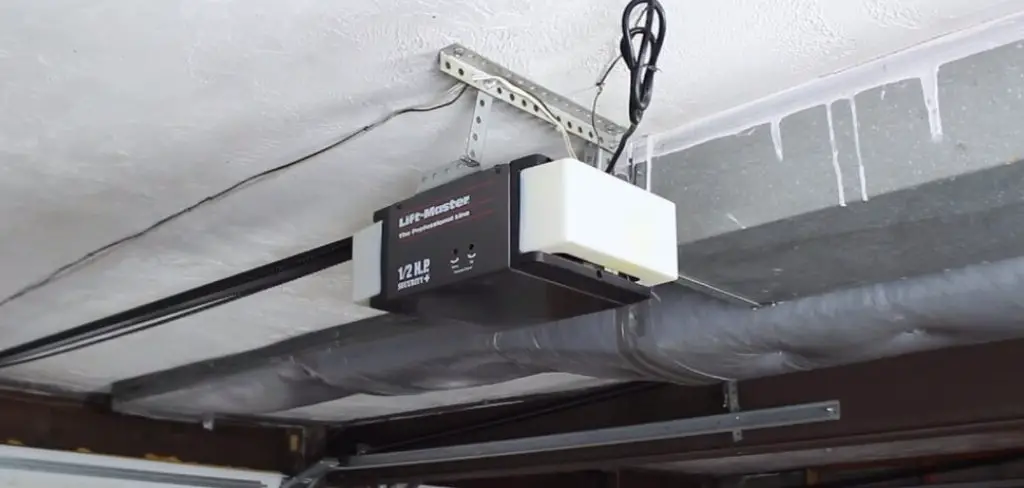
By following a few simple steps on how to erase garage door opener, you can ensure that any unauthorized access to your garage is prevented, providing you with peace of mind and safeguarding your property. In this article, we’ll explore the methods and steps involved in erasing a garage door opener from your system, empowering you to take control of your home’s security and access control.
Why Erasing a Garage Door Opener Is Necessary
Erasing a garage door opener from the system is necessary for several compelling reasons, primarily revolving around enhancing home security and personal safety. When a remote control is lost or stolen, it poses a significant security risk, as anyone who finds it may gain unauthorized access to your garage and, potentially, your home.
Similarly, if you’re moving into a new home, previous occupants or anyone with a programmed remote could still access your garage if the opener codes are not reset. Furthermore, erasing old codes and programming new ones is a crucial preventive measure against potential digital hacking attempts, as modern thieves have developed methods to intercept and duplicate signal transmissions from garage door remotes.
By regularly resetting your garage door opener codes, you’re taking a proactive step towards safeguarding not just your possessions stored within the garage but also enhancing the overall security of your home and the safety of your family.
Importance of Security and Privacy
Security and privacy are paramount in today’s digital age, extending beyond the confines of our online activities to encompass the physical security of our homes.
The significance of securing access to our living spaces cannot be overstated, particularly when it comes to areas like garages which often serve as a secondary entrance to our homes and a storage area for valuable items.
Ensuring that only authorized individuals can access your garage is a critical component of maintaining your overall home security. Privacy concerns also come into play; it is essential to have control over who can enter your property to protect your personal space and belongings from unwanted scrutiny or theft.
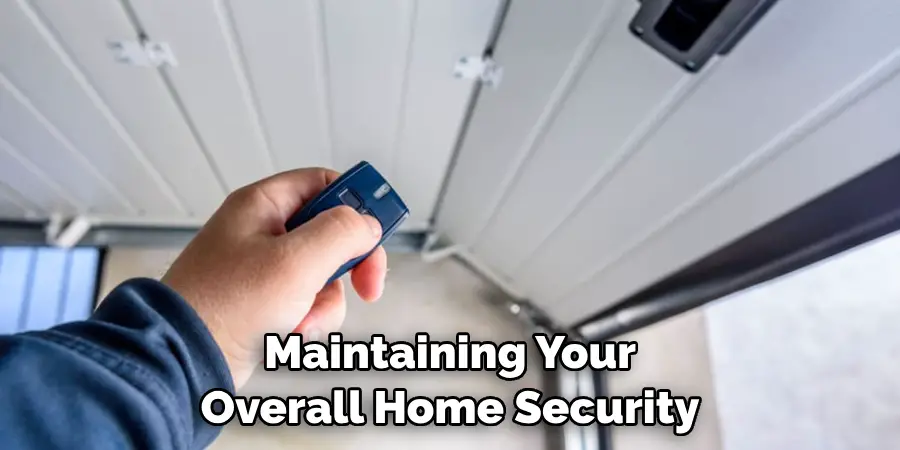
By prioritizing the security and privacy of garage access, homeowners can effectively mitigate risks, deter potential intruders, and create a safer living environment for themselves and their families.
Understanding the Reasons for Erasing
The decision to erase a garage door opener from your system is not one to be taken lightly and stems from a need to uphold the highest standards of security and safety within your home. Beyond the obvious scenarios of lost or stolen remote controls, there are several reasons why this action becomes necessary.
One such reason is the accumulation of too many access devices or codes that are no longer in use, leading to confusion and potential security lapses. Additionally, technical glitches or malfunctions within the system can often be resolved through a complete reset, which includes erasing all existing codes and reprogramming the opener.
In situations where you suspect that your garage door system’s security has been compromised, perhaps through observed anomalies in its operation or after a break-in attempt, erasing and resetting the system is a critical step in reinstating your home’s security integrity. Understanding these multifaceted reasons for erasing provides homeowners with the insight needed to maintain their property’s security proactively.
Common Scenarios Necessitating the Erasure of a Garage Door Opener
There are multiple scenarios where erasing your garage door opener becomes not just advisable but essential for maintaining security and operational efficiency. These scenarios commonly include:
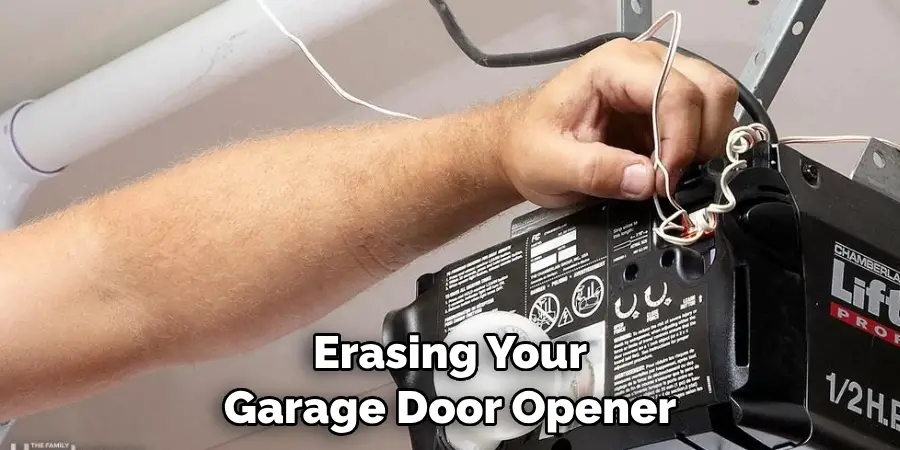
- Lost or Stolen Remotes: Perhaps the most urgent reason is if your garage door remote is lost or stolen. In such cases, erasing the opener from your system and reprogramming it ensures that the missing remote cannot be used for unauthorized access.
- Moving to a New Home: Moving into a new house necessitates the erasure of the previous settings to eliminate the possibility of previous occupants or others with prior access using the garage door opener to enter your garage.
- After a Break-In Attempt: If there has been an attempted or successful break-in, erasing and reprogramming your garage door opener is critical in restoring security. This process helps ensure that any codes potentially compromised are invalidated.
- Ownership Change of a Vehicle: If you sell a vehicle that had a built-in garage door opener programmed to your home, erasing the garage door opener’s settings can prevent unauthorized access from the vehicle’s new owner.
- System Reset for Technical Glitches: Occasionally, the garage door system may experience technical difficulties or malfunctions, such as unresponsive remote controls or the garage door opening and closing unexpectedly. Performing an entire system reset by erasing and reprogramming can often resolve these issues.
- Preventive Security Measure: Regularly resetting your garage door opener by erasing and reprogramming can be a proactive security measure to safeguard against the potential risk of digital hacking attempts or signal interceptions.
In each of these scenarios, erasing the garage door opener serves as a crucial step in re-establishing a controlled and secure access point to your home, thus ensuring the safety of both your property and your loved ones.
Potential Security Risks Associated
The security risks associated with not properly managing and resetting garage door opener codes are significant and varied. Unauthorized access is the most direct threat, where individuals can gain entry into your garage and potentially your home. This scenario not only jeopardizes the safety of your possessions but also poses a risk to the personal safety of your household members.
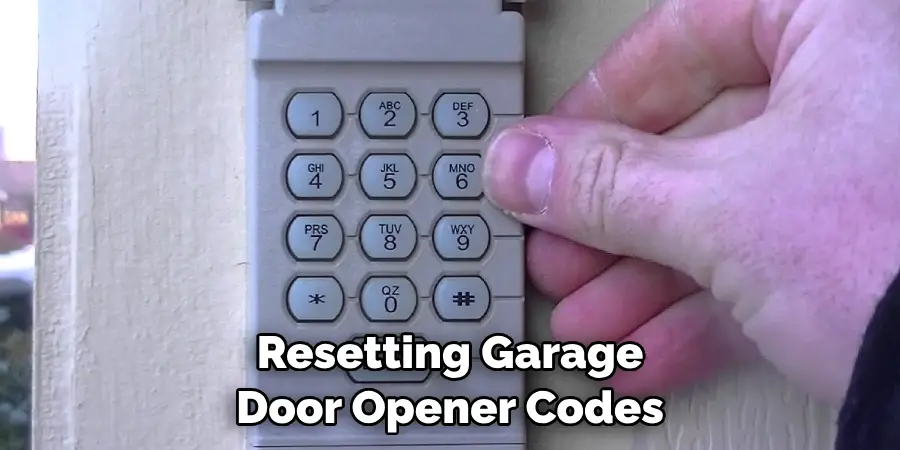
Additionally, the digital era introduces another layer of risk; savvy criminals have developed techniques to intercept and replicate remote control signals, enabling them to open garage doors without needing physical possession of a remote. This form of digital hacking can be particularly insidious because it can occur without the homeowner’s knowledge, until a theft or unauthorized entry has already taken place.
Importance of Maintaining Control Over Garage Door Access
Maintaining strict control over garage door access is essential for several compelling reasons. First and foremost, it directly impacts the security of your home by preventing unauthorized entry, which could lead to theft or harm to household members.
Secondly, it allows homeowners to manage who has access to their property at any given time, thereby eliminating potential security risks associated with lost, stolen, or otherwise compromised remote controls.
Additionally, control over garage door access can enhance privacy by restricting entry to only those individuals whom the homeowner has deemed trustworthy. In the digital age, where the threat of electronic hacking looms large, being vigilant in controlling access to your garage door opener also serves as a critical defense against digital intrusions that could compromise home security.
Thus, taking proactive steps to regularly update and secure your garage door opener access codes is not just a matter of convenience, but a crucial component of overall home security and privacy protection.
10 Methods How to Erase Garage Door Opener
1. Consult the Owner’s Manual:
Begin by locating the owner’s manual that came with your garage door opener system. The manual contains detailed instructions specific to your opener model, including how to erase existing codes and reset the system. If you don’t have the manual, you can often find it online by searching for the model number of your garage door opener.
2. Locate the Learn Button:
Most garage door openers feature a “learn” or “program” button on the motor unit. This button is essential for programming new remotes and erasing existing codes from the system. The location of the learn button varies depending on the opener model but is typically found on the back or side of the motor unit near the hanging bracket.
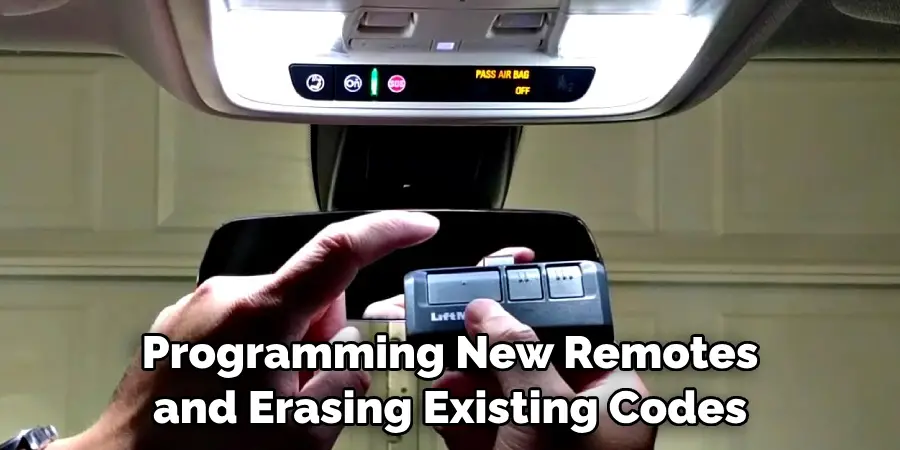
3. Press and Hold the Learn Button:
To enter programming mode and prepare the system for code erasure, press and hold down the learn button for a few seconds. As you press the button, you may notice a light or indicator on the motor unit, signaling that the opener is ready for programming.
4. Release the Learn Button:
After holding the learn button down for a few seconds, release it. This action signals to the opener that you’re ready to begin the process of erasing existing codes and resetting the system. You may observe the indicator light on the motor unit blinking or turning off momentarily, indicating that the system is ready for programming.
5. Choose a Reset Method:
Different garage door opener models may have varying methods for resetting or erasing codes. Refer to your owner’s manual to determine the appropriate reset method for your specific opener. Common methods include pressing the learn button a specific number of times or holding it down for a longer duration. Choose the method that aligns with your opener’s instructions.
6. Enter the Reset Code:
Follow the instructions outlined in your owner’s manual to enter the reset code into the keypad or remote control that you want to erase from the system. This typically involves pressing a sequence of buttons or following a specific procedure outlined in the manual. Take your time to ensure you input the reset code accurately.
7. Verify Erasure:
After entering the reset code, verify that the garage door opener system has successfully erased the code. Test the remote control or keypad associated with the erased code to ensure that it no longer operates the garage door opener. Attempt to open and close the garage door using the erased remote or keypad to confirm the code removal.
8. Repeat if Necessary:
If you have multiple remotes or keypads that you need to erase from the system, repeat the above steps for each device. Ensure you follow the same procedure for each device to ensure that all codes are properly erased. Take your time and double-check each step to prevent any oversights.
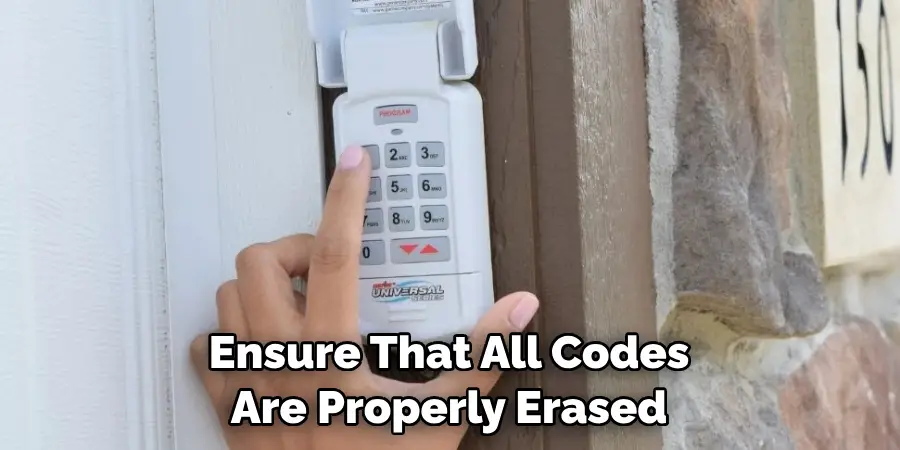
9. Reset the Opener System:
Once you’ve erased all desired remotes and keypads from the system, reset the garage door opener system to exit programming mode. Follow the instructions in your owner’s manual to reset the opener, which may involve pressing the learn button again or following a specific procedure outlined in the manual. This step ensures that the system is ready for normal operation after completing the code erasure process.
10. Test the System:
Finally, conduct thorough testing of the garage door opener system to ensure that all erased codes have been successfully removed. Use a remote control or keypad that was previously programmed to operate the opener and verify that it no longer works. Attempt to open and close the garage door using the erased remote or keypad to confirm that the code removal was successful. If any issues arise during testing, refer back to the owner’s manual for troubleshooting guidance.
Additional Considerations and Tips
- Regularly Update Codes: Even after erasing and reprogramming your garage door opener, make it a habit to change your codes periodically. This prevents any unauthorized access from individuals who might have learned your code over time.
- Use Rolling Codes Technology: Modern garage door openers often come equipped with rolling code technology, which changes the access code every time the garage door is used. If your current system doesn’t feature this technology, consider upgrading to provide an additional layer of security.
- Secure Remote Controls: Treat your garage door opener remote controls with the same care as your house keys. Avoid leaving them in plain sight within your vehicle or unsecured locations. This lowers the risk of them being stolen or misused by unauthorized individuals.
- Enhance Wi-Fi Security: If your garage door opener is connected to your home’s Wi-Fi network, ensure that your network is secure. Use strong passwords, enable network encryption, and regularly update your router’s firmware to prevent digital intrusions.
- Install Motion-Detector Lights: Coupling your garage door opener with motion-detector lights can deter potential intruders. The sudden illumination when movement is detected near your garage can discourage unauthorized entry attempts.
- Exercise Discretion: When inputting your garage door code, ensure privacy so passersby or potential intruders cannot see you entering your code. This simple measure adds a significant barrier against unauthorized access.
- Regular Maintenance: Periodically inspect and maintain your garage door opener system. This includes checking for wear and tear on the mechanical parts, ensuring sensors are correctly aligned, and that all security features are functioning as intended.
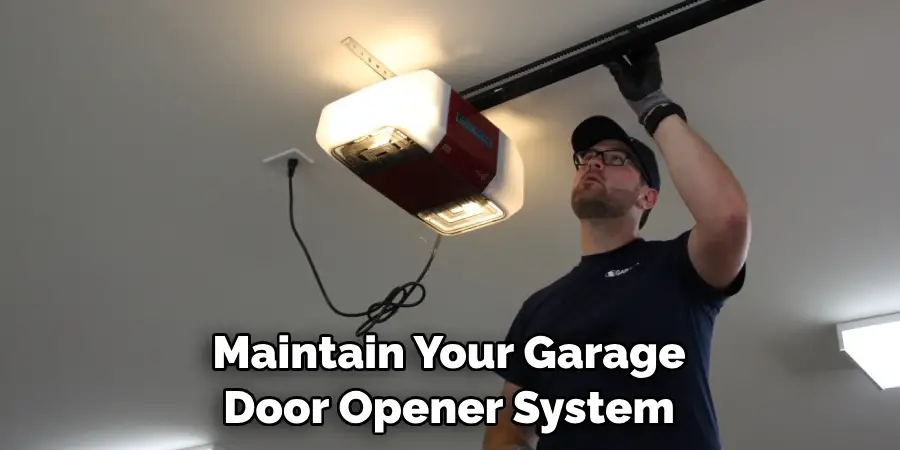
Troubleshooting and Support
Facing issues with your garage door opener, even after following the reset and erasure steps, is not uncommon. Here are a few troubleshooting tips that can help resolve common problems:
- Opener Doesn’t Respond to Remote or Keypad: If the garage door opener doesn’t respond to input from the remote control or keypad, first ensure that the device is properly charged or has fresh batteries. Next, verify that the opener is not in lock mode or vacation mode, which disables remote inputs.
- Garage Door Reverses Before or After Hitting the Floor: This issue often relates to the opener’s sensitivity settings or the safety sensors. Check if the safety sensors at the bottom of the door frame are aligned and unobstructed. Adjust the opener’s sensitivity settings according to the owner’s manual to address this issue.
- Remote Works But Keypad Doesn’t: If the remote control operates the door but the keypad doesn’t, ensure the keypad is programmed correctly and the code is correctly entered. Also, check the keypad for any signs of physical damage or battery issues.
- Noisy Operation or Vibration: Excessive noise or vibration may indicate mechanical issues with the opener or the garage door itself. Check for loose hardware, lubricate moving parts according to the manufacturer’s instructions, and consider calling a professional if the problem persists.
- Garage Door Opens But Won’t Close: This problem is often related to the safety sensors. Ensure nothing is blocking the sensors’ path and that they are properly aligned. Clean the sensors to remove dust or debris that may interfere with their operation.
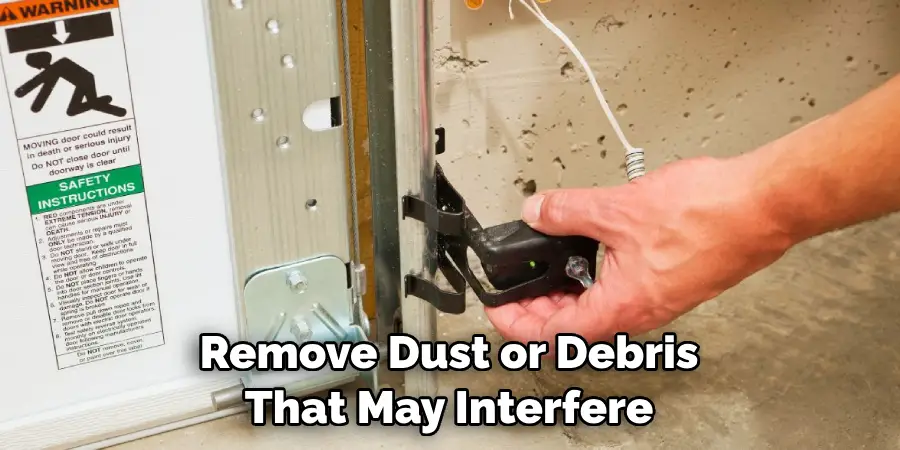
Conclusion
In conclusion, erasing your garage door opener is a crucial step in maintaining the security and privacy of your home. By following the comprehensive guide provided in this article, homeowners can confidently reset their garage door access codes, ensuring that unauthorized individuals cannot gain entry.
Whether erasing old codes from remote controls, keypad entry systems, or other access devices, each step is essential in maintaining control over garage door access.
Remember, prioritizing security measures and regularly updating access codes can help prevent potential breaches and safeguard your property and loved ones. Hopefully, this article gave you some helpful tips about how to erase garage door opener successfully, so now that you have the proper knowledge on how to get the job done, why not give it a try today?
